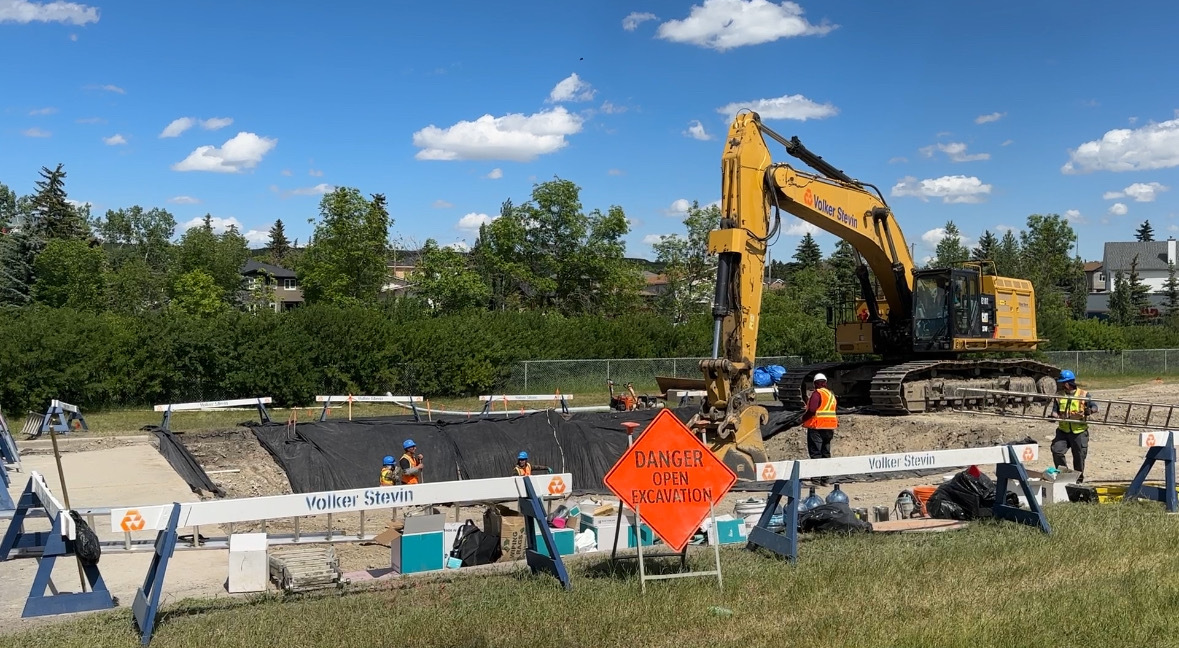
Calgary Mayor Jyoti Gondek says water use came back down by 23 per cent as flushing of the feedermain is underway Saturday after it was finished being filled.
Following 500 million litres used on Thursday, the most amount of water since the crisis began on June 5, water use dropped to 460 million litres on Friday.
The city has long said the threshold considered safe is 480 million litres, meaning issues could arise for hospitals and other medical facilities if a fire were to break out.
“Thank you sincerely for understanding what we needed to do together to ensure that water could continue to flow to all of our homes and businesses and be available for critical situations for life-saving measures, whether in hospitals or through the fire department,” she said in her morning update.
While thanking Calgarians and surrounding areas for their efforts, Gondek says there are still a few steps before the city can give the all-clear.
Those steps are filling the main, flushing it out, having the water tested by Alberta Health Services (AHS), and finally stabilizing it.
She says the first step was completed Friday at 6 p.m., with flushing starting soon after and continuing as of Saturday morning.
“This step is essential to remove any of the sediment that may have entered the pipe during the repairs,” she said. “This is to ensure that our water is clean and safe.”
As a result, Calgarians may see water being flushed out of hydrants and other pipes in Ed Worthy Park and Point McKay. Three areas of the park will be closed to the public to allow this work to happen.
Gondek says the water is being de-chlorinated before flowing back into the river system, and says the city is working closely with Alberta Environment and Protected Areas to ensure the “health of the river.”
“We are carefully monitoring where the de-chlorinated water is entering the river downstream,” she said.
“We’ve also taken great precautions to ensure that erosion and sediment controls are in place to protect the riverbank.”
Related Stories:
AHS has three parameters for testing, and those are checking chlorine levels, checking for water clarity, and checking for bacteria in the water. The process takes 24 hours.
“But we need the all clear on water quality before we can move to stabilization, and that may involve more than one test and one round of flushing,” Gondek said.
“That’s why the timeline is our best estimate and we still need to be saving water daily.”
The mayor said Wednesday that restrictions could be lifted by Canada Day as long as crews don’t run into any more unforeseen problems as they work to restore the regular water supply.
The mayor compares the process to post-doc treatment following invasive, saying that “after the final stitches are done, there is still post-operative care that takes place.”
“Just because you have had your stitches done, it doesn’t mean that the journey is over. Your doctors won’t let you go back to normal immediately,” Gondek
“Right now, the work sites have been stitched up. They’ve been backfield, and they’ve been paved over, and our water crews are now doing that post op care, the filling, the flushing, the testing and the stabilizing, just as your doctor wouldn’t let you get back to regular activities until everything is stabilized after surgery. That’s the position we are in with the feedermain.”
The Stage 4 outdoor water restrictions remain in place along with the fire ban. Fines are now being handed out for non-compliance and the city says they have now fielded nearly 3,000 calls about water misuse.
City officials also confirmed this week that Canada Day fireworks will proceed from Stampede Park, despite the ongoing fire ban.
With files from Lauryn Heintz